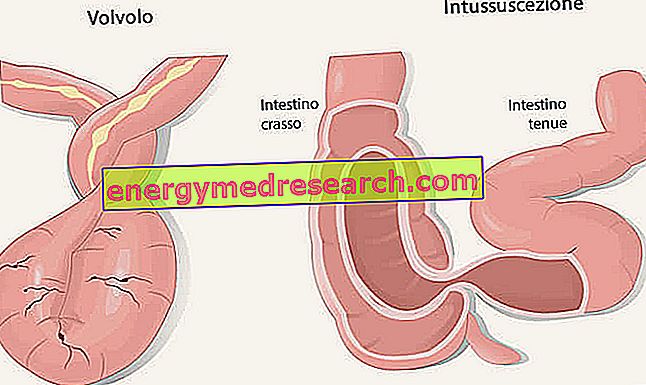Related articles: Bronchiectasis
Definition
Bronchiectasis is a form of chronic obstructive pulmonary disease (COPD), characterized by stretching and abnormal dilation of the airways, due to the formation of mucus plugs.
Bronchiectasis can be spread (involving a large area) or focal (it develops only in one or two areas of the respiratory tree).
At the origin of this condition there is a chronic infectious and inflammatory state, able to damage the walls of the bronchi and determine a loss of the ability to eliminate the viscous secretions that accumulate in the respiratory tract. The presence of this mucus in turn causes an increased risk of colonization by pathogens, which predisposes the patient to new infections and inflammation. This creates a vicious circle.
Over time, the airways dilate, heal and distort. In particular, the bronchial walls are thickened by edema and neovascularization, while the destruction of the interstitium and the surrounding alveoli causes fibrosis and / or emphysema. The damage can become so severe that it hinders the passage of air (respiratory failure) and creates problems for oxygenation to the whole body.
Bronchiectasis is frequently associated with cystic fibrosis (the most common cause), immunodeficiencies (for drug therapies, HIV infection, etc.) and recurrent infections, although some cases appear to be idiopathic. The diffuse form can also develop in patients with genetic or anatomical abnormalities affecting the airways. Focal bronchiectasis develops mainly from an untreated lung infection (eg pneumonia, tuberculosis or fungal infections) or from obstruction due, for example, to the presence of foreign bodies and tumors.
Furthermore, at the origin of this pathological condition there may be Sjögren's syndrome, allergic bronchopulmonary aspergillosis, a1-antitrypsin deficiency and eyelash disorders lining the walls of the bronchi.
Most common symptoms and signs *
- Respiratory acidosis
- Halitosis
- Anorexia
- Asthenia
- Pulmonary atelectasis
- palpitations
- Catarrh
- Cyanosis
- Dyspnoea
- Distension of the neck veins
- Drumstick fingers
- Chest pain
- Edema
- hemoptysis
- Hemoptysis
- Temperature
- Swollen legs
- Hypercapnia
- Hypoxia
- Weight loss
- pneumothorax
- rales
- Wheezing breath
- Reduction of respiratory noise
- Ronchi
- Blood in Saliva
- Sense of suffocation
- Drowsiness
- Tachycardia
- tachypnoea
- Cough
- Dizziness
Further indications
The manifestations of bronchiectasis arise subtly, slowly and progressively worsening over the years.
The main symptom is chronic cough, which almost always can produce large volumes of thick, viscous and muco-purulent sputum; some patients may also experience mild hyperpyrexia. Halitosis and abnormal respiratory sounds (crackles, ringing and hissing) are typical signs of the disease. Bronchiectasis also causes breathlessness (dyspnea), chest pain and hemoptysis, sometimes massive.
Acute exacerbations of the disease caused by a new or worsening pre-existing infection can make the cough worse and produce an abundant sputum.
In advanced cases, digital hippocratism (drumstick deformation of the last phalanges of the fingers), hypoxia and signs of pulmonary hypertension (eg respiratory difficulties and vertigo) may occur. Possible complications of bronchiectasis are respiratory failure and atelectasis, or the partial or total collapse of a part of the lung. These situations cause worsening dyspnea, tachycardia (acceleration of heart rate) and tachypnea (increase in the rate of breath). Following a reduction of most of the functional lung tissue, right heart failure can occur, characterized by breathlessness, the appearance of edema in the lower limbs, swelling of the jugular veins and marked fatigue.
The diagnosis of bronchiectasis is based on the anamnesis and diagnostic imaging, usually through a high resolution computerized axial tomography (CT), even if the standard chest radiograph may be sufficient to highlight the pathological process and exclude other conditions (eg. lung tumor). Other investigations may include sputum culture, spirometry and bronchoscopy.
Treatment and prevention of acute exacerbations includes the use of antibiotics, drainage of secretions (eg exercises in respiratory gymnastics, intake of mucolytics, etc.) and the management of complications. When possible, it is important to treat underlying diseases.
For the prevention of upper respiratory tract infections, it is useful to resort to annual influenza vaccinations. Furthermore, it is essential to refrain from smoking.


